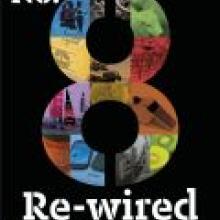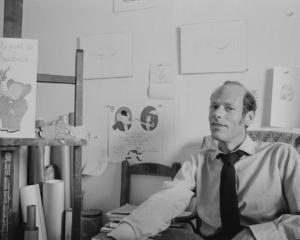
The retort greeted one of my pair of cruise ship talks, ''New Zealand Inventiveness'' and ''Australian Inventiveness'' (tourism diplomacy precludes me from revealing which one).
The legendary downunder ingenuity must surely have germinated in the era when an order for a spare part took three or four months to reach Europe (and the reply might be ''what colour?'').
No 8 is certainly as indispensable as ever, not to be confused with the 2.5mm diameter fence wire commonly used now.
No 8, referring to the obsolete Standard Wire Gauge (swg), is the thicker gauge sometimes used for the top wire, just over 4mm in diameter.
At that gauge it has a lot of rigidity and Meccano enthusiasts will know it's the size for axles and spindles.
The Martin Jetpack personal flying machine is a pleasing choice for this book's opening invention.
It was the brainchild of University of Otago biochemistry student Glenn Martin, sparked by chatter in the Captain Cook.
An early breakthrough was his calculation that a jetpack, to support any realistic endurance like 30 minutes, could not be a jetpack.
Thrust had to be by ducted fans driven by a specialised engine.
But what do you do if the fan stops 1000m up in the air?
The second thing is to fire your rocket-propelled parachute, silly.
This is a serious rescue and multipurpose machine, already tested.
The first Cook Strait crossing may be soon.
Ernest, Lord Rutherford's Nobel Prize was for work on radioactivity, not splitting the atom, which was achieved later under his supervision.
Rutherford's brilliance was to squeeze the maximum of information out of a simple observation.
Alpha particles did not penetrate gold foil in quite the way expected, and inexplicably, a few bounced back.
There had to be an explanation, and the ''plum pudding'' model of the atom gave way to Rutherford's concept of a compact central nucleus and vast amounts of empty space.
CxBladder, the Pacific Edge Biotechnology test for bladder cancer, needs only a urine sample.
That hasn't made it a simple test to develop, based on cutting-edge detection of key tumour molecules, but the non-invasive nature of the test is priceless.
Bungy jumping needs little explanation to visitors to the Kawarau or Skippers bridges.
The Vanuatu tradition on Pentecost Island has long relied on natural vines as ropes, but AJ Hackett and Henry van Asch are credited with popularisation of the experience internationally with high-tech cords and stringent safety standards.
Prodigious inventor Colin Murdoch's stable included tranquilliser guns, disposable syringes and childproof medicine containers.
The authors attribute the last of these to the similarly ingenious Claudio Petronelli, but ideas have parents and origins are often debatable.
The authors send a message in the word ''re-wired''.
To succeed commercially we need to rewire our inventiveness, to collaborate with specialists internationally, to develop, perfect, market and sell our ideas, even if they did spring from bits of No 8 in the shed.
The Edlin-Stewart engine?
The KiwiStar lens?
Conductive plastics?
Jet boats?
The Molteno glaucoma drain?
Plastic surgery?
Live sports animation?
The list is, well, 202, and with a couple of pages per invention this book is ideal for the inquiring reader with fragmented time.
• Clive Trotman is a Dunedin arbitrator and science presenter.











